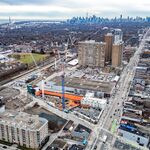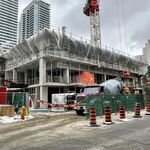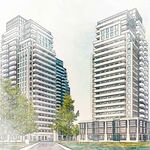C
cdl42
Guest
There's a HUGE difference between garbage and clean fill. Garbage is household waste; as to what clean fill is... a definition from some web site:
"Fill" is dirt. Top soil, clay, sand, gravel, rubble, even brick or concrete. "Clean", in this case, means environmentally clean, i.e. free from contaminants, including corrosive, combustible, noxious, zootoxic, reactive, or radioactive materials. The reason some people want it is to raise the elevation of a lot in order to make it more suitable to construction or change the contours of a site ... . ... construction of some types, or on some sites, often entails the removal of such material from a site, and simply dumping it elsewhere on the site may be impractical or illegal. ... the environment benefits because this material is essentially recycled.
When construction is booming the supply of clean fill far exceeds the demand, leading to some creative uses when applied on a large scale.
Everything south of Front Street/Esplanade, including the portlands and the Leslie Street Spit is fill and so are the filled in ravines. Chingcousy Park Hill in Brampton is also made of fill, unlike Centennial Park.
This reminds me of a family friend who built his house out in Buckhorn as much as possible out of leftovers and waste from the construction of CCW. The waste was being stored in a "recycling yard" in the portlands, and he would fill up his truck with what he needed and go. For example, the weatherproofing liner under the shingles was the protective covering that the stainless steel panels would come covered with.
"Fill" is dirt. Top soil, clay, sand, gravel, rubble, even brick or concrete. "Clean", in this case, means environmentally clean, i.e. free from contaminants, including corrosive, combustible, noxious, zootoxic, reactive, or radioactive materials. The reason some people want it is to raise the elevation of a lot in order to make it more suitable to construction or change the contours of a site ... . ... construction of some types, or on some sites, often entails the removal of such material from a site, and simply dumping it elsewhere on the site may be impractical or illegal. ... the environment benefits because this material is essentially recycled.
When construction is booming the supply of clean fill far exceeds the demand, leading to some creative uses when applied on a large scale.
Everything south of Front Street/Esplanade, including the portlands and the Leslie Street Spit is fill and so are the filled in ravines. Chingcousy Park Hill in Brampton is also made of fill, unlike Centennial Park.
This reminds me of a family friend who built his house out in Buckhorn as much as possible out of leftovers and waste from the construction of CCW. The waste was being stored in a "recycling yard" in the portlands, and he would fill up his truck with what he needed and go. For example, the weatherproofing liner under the shingles was the protective covering that the stainless steel panels would come covered with.




